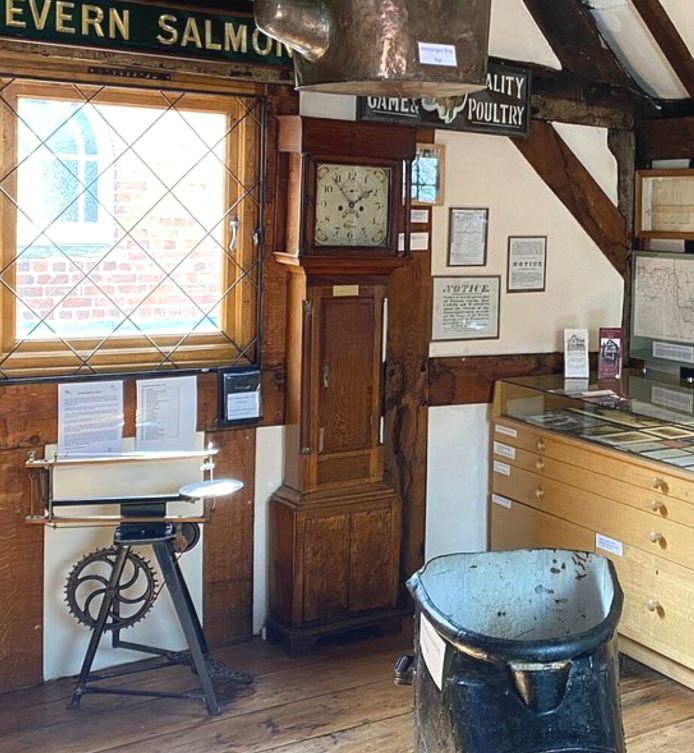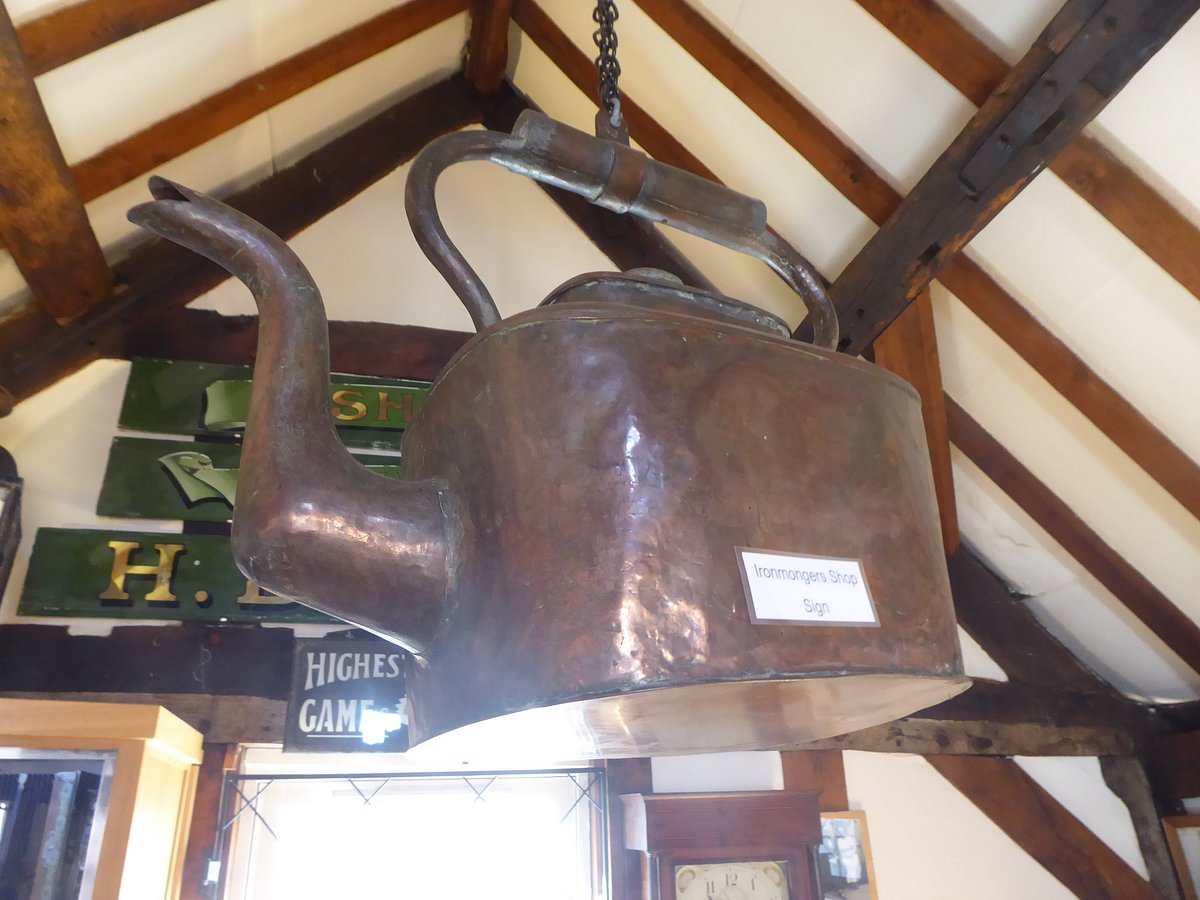

BUTCHER ROW HOUSE MUSEUM
Butcher Row House Museum has a quirky interior evocative of the past. The museum objects have been gathered for their historic connections with the town. Contents include…
- The curiosity boot bath (pictured here).
- Reproductions of Civil War helmets and breastplates that would have been worn in the Battle of Ledbury (1645).
- Victorian costumes.
- A collection of musical instruments ranging from a hurdy gurdy to a Tibetan pipe fashioned from a thigh bone!
- A selection of books about the town.
The museum is run by volunteers with a huge knowledge of local history.
HISTORY. THE HOUSE THAT MOVED TWICE!
This strangely named little museum, now tucked away in a peaceful courtyard off a cobbled lane, owes its name to a long history when it played a leading part in Ledbury’s economic wealth.
A market which had been in Church Lane since medieval times had gradually spread into the wide space at the bottom of the High Street. It was here that livestock was brought into town, penned up, sold and slaughtered. By the 16th century shops and houses related to this trade, many of them butchers, had become permanent down the centre of the street.
The refurbishment of the High Street in the late 17th century resulted in calls for these buildings to be demolished and an Act of Parliament of 1835 gave this Royal Assent. This house was one of two which survived, eventually being gifted to Ledbury Civic Society in 1979.
It had been stored in the back garden of 14 High Street. So members of the civic society organised its dismantling for a second time and finally erected in its present location on Church Lane.
ACCESS AND OPENING
The Museum is on two floors. Upstairs access is a bit tricky. For those who find it daunting there is a video downstairs showing what can be seen above! (There is wheelchair access downstairs.)
Closed for the winter. In 2025, the museum will be open Tuesday to Saturday, from 10.00am to 4.00pm, from 1 April. Entry is free.
But donations towards maintenance are gratefully received.
The Museum is halfway up Church Lane, on the right coming from the High Street.
Butcher Row House Museum, Church Lane, Ledbury HR8 1DW

Of particular interest, is what is believed to be a unique lute from the Regency period. It was discovered in 2015 and has been authenticated by the Victoria & Albert Museum. It was restored to performance condition by the V&A and recordings are available at the museum.


Very interesting museum small but full of fascinating history. The volunteer was very welcoming and knowledgeable. Well worth a visit!
Amazing little gem for local history & archaeology. Crammed full of amazing artefacts and displays as well as information and photographs, all very interesting. It’s a small place just split over two little floors, but plenty to see. Would definitely recommend popping in on your way through Ledbury!
What an interesting little museum this is. It is packed with items from the past. The stairs are quite challenging but if unable to ascend there is a little screen showing items from upstairs. The lady in attendance was a delight to talk to and very knowledgeable about the area.
During my expedition to the delightful town of Ledbury, I came across a museum which thoroughly piqued my interest. We were greeted with a welcoming atmosphere, and examined the exhibitions with great respect. Upon our ascent to the upper floor of the establishment, we came across the star of the show – the Ledbury Boot Bath. This ancient monument has certainly been treasured through many generations, and I can only imagine the wealth of history that it brings with it. It is a great shame that visitors are forbidden entry into the boot bath, as I would have gladly taken you up on this opportunity. I will certainly be visiting this establishment again.
Philip Clissett
Philip Clissett (1817-1913) is celebrated in the museum with several examples of his chairs and stools. From Worcestershire he moved to nearby Bosbury in 1840.
For the next 40 years, he built a reputation for his traditional chairs made with local ash and elm. A chair was a day’s work. He took them by donkey cart to Ledbury or Hereford to sell.
In the 1880s a new wing for Ledbury Park was built, and Clissett was commissioned to make an elongated ‘ladderback’ style of chair (shown here). This led to a wider reputation. The Arts and Crafts pioneer Ernest Gimson then studied under Clissett. Gimson helped popularise the ‘Clissett Chair’. It is still made today.





















